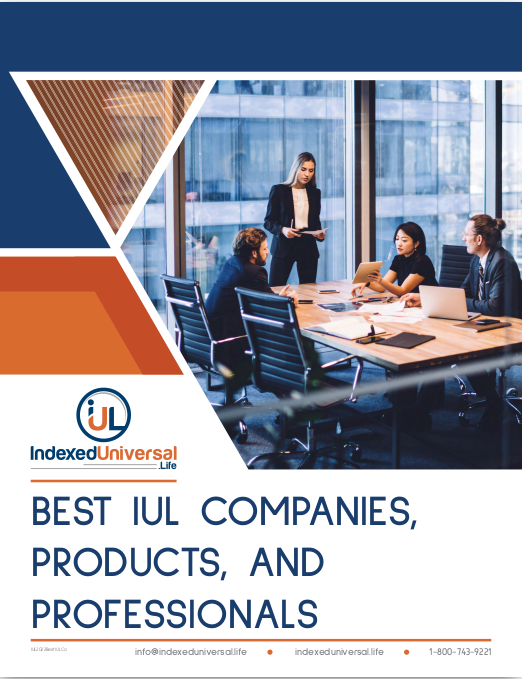
Key Takeaways:
- Selecting the right Indexed Universal Life Insurance (IUL) policy involves evaluating your financial goals, understanding policy features, and considering fees, charges, and flexibility.
- Working with a financial advisor can provide valuable insights and help tailor the IUL policy to meet your specific needs.
How to Choose the Right IUL Policy: Key Points to Consider Before Deciding
Indexed Universal Life Insurance (IUL) policies offer a unique combination of life insurance protection and the potential for cash value growth linked to market indexes. Choosing the right IUL policy requires careful consideration of various factors to ensure it aligns with your financial goals and provides the desired benefits. This article explores key points to consider before deciding on an IUL policy, including understanding your financial objectives, evaluating caps and participation rates, assessing fees and charges, and considering the flexibility and customization options of the policy.
Understanding Your Financial Objectives and Risk T tolerance
The first step in choosing the right IUL policy is to clearly define your financial objectives and assess your risk tolerance. Understanding your long-term financial goals will guide you in selecting a policy that aligns with your needs.
Define Your Financial Goals
Consider what you aim to achieve with your IUL policy. Common goals include:
- Wealth Accumulation: Building cash value over time to supplement retirement income or fund future expenses.
- Life Insurance Protection: Ensuring financial security for your beneficiaries through a substantial death benefit.
- Tax Advantages: Utilizing the tax-deferred growth of the cash value and tax-free policy loans for financial planning.
Assess Your Risk Tolerance
Risk tolerance refers to your willingness and ability to endure market fluctuations. IUL policies offer different levels of exposure to market indexes, impacting the growth potential and volatility of the cash value. Assessing your risk tolerance will help you choose a policy that matches your comfort level with market risks.
Evaluating Caps, Participation Rates, and Growth Potential
Caps and participation rates are critical factors that determine the cash value growth of an IUL policy. Understanding these elements and their impact on the policy’s performance is essential for making an informed decision.
Caps
Caps are the maximum interest rates credited to the cash value based on the performance of the underlying market index. For example, if the cap is 10% and the index gains 15%, the cash value will be credited with a 10% gain. Higher caps allow for greater growth potential but may come with higher fees or other trade-offs.
Participation Rates
Participation rates determine the percentage of the index’s gains credited to the cash value. For instance, if the participation rate is 80% and the index gains 10%, the cash value will be credited with an 8% gain. Policies with higher participation rates capture more of the market’s upside, enhancing growth potential.
Evaluating Historical Performance
Review the historical performance of the indexes linked to the IUL policies you are considering. While past performance does not guarantee future results, it provides insight into the potential growth and volatility of the cash value. Comparing the caps and participation rates across different policies can help you identify those with the best growth potential.
Assessing Fees, Charges, and Cost Efficiency
Fees and charges can significantly impact the net growth of the cash value in an IUL policy. Understanding these costs and their long-term implications is crucial for selecting a cost-effective policy.
Common Fees and Charges
- Premium Load Fees: Deductions from each premium payment before it is credited to the cash value. These fees cover the costs of underwriting and issuing the policy.
- Administrative Fees: Monthly charges for maintaining the policy, including record-keeping, billing, and customer service.
- Cost of Insurance (COI): Charges that cover the risk assumed by the insurer in providing the death benefit. COI charges typically increase as the policyholder ages.
- Surrender Charges: Fees imposed if the policy is surrendered within a specified period, usually the first 10-15 years. These charges recoup the insurer’s initial costs of issuing the policy.
Evaluating Cost Efficiency
When comparing IUL policies, consider the total cost impact over the policy’s lifetime. Higher fees can erode the cash value growth, reducing the overall benefits. Conducting a net benefit analysis, which calculates the net cash value growth after accounting for all fees and charges, can help identify the most cost-efficient policies.
Flexibility and Customization: Aligning the Policy with Your Needs
One of the key advantages of IUL policies is their flexibility and customization options. Choosing a policy that offers the right level of flexibility can help you adapt to changing financial needs and goals.
Premium Payment Flexibility
IUL policies often allow for flexible premium payments, enabling you to adjust contributions based on your financial situation. This flexibility can be particularly beneficial during periods of financial strain or when you have excess funds to invest.
Death Benefit Adjustments
Many IUL policies allow for adjustments to the death benefit. You can increase the death benefit to provide additional protection for your beneficiaries or decrease it to reduce the cost of insurance and enhance cash value growth. This flexibility ensures that the policy remains aligned with your evolving financial responsibilities.
Access to Cash Value
Consider the options for accessing the cash value through policy loans and withdrawals. Policy loans provide tax-free access to funds without mandatory repayment schedules, offering significant financial flexibility. Withdrawals, while reducing the death benefit, can provide immediate liquidity for emergencies or major expenses. Understanding these options and their implications is essential for maximizing the policy’s benefits.
Conclusion: Making an Informed Decision
Choosing the right Indexed Universal Life Insurance policy requires a thorough evaluation of your financial objectives, risk tolerance, and the specific features of each policy. By understanding your goals, assessing the caps and participation rates, evaluating fees and charges, and considering the flexibility and customization options, you can select an IUL policy that aligns with your needs and provides the desired benefits. Consulting with a financial advisor can further enhance your decision-making process, ensuring that your chosen IUL policy contributes effectively to your long-term financial success.
Contact Information:
Email: [email protected]
Phone: 5613285961
Bio:
Erik Ranberg, Certified Federal Retirement Consultant (FRC℠) and Marine Veteran, has a unique ability
to cut through the “fancy speak” and help you understand the complexity of your Federal Benefits. Erik
has over 20 years of experience in the retirement arena assisting public servants at the Federal, State,
Municipal and Educator levels. Erik assists Federal Employees complete their retirement and disability
applications, provides guidance to project and plan retirement income, establish multi-pension/income
streams, and avoid the tax traps that many retirees often fall victim to. Whether you become a client or
not, you will walk away with a thorough, clear, and easy to understand knowledge with respect to your
individual retirement wishes. Erik’s unique background which includes the US Marines, the utility
construction industry and then financial services provides a “no pressure, nothing to sell you” common
sense approach you will enjoy.





